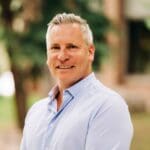Project Summary
Project Type:
Implementation of SaaS-based EpochField GIS mapping for users across eight locations, followed soon by integration with the SAP enterprise system to support work order management.
Number of Customers:
About 6 million
Applications:
To equip line workers with easy access to reliable GIS data on field assets and access roads, facilitating inspections, maintenance, and emergency response work.
Solutions Implemented:
EpochField Work Management, EpochField Mobile, EpochField Workflow Builder, and EpochField Administrator
Member Benefits:
Access up-to-date GIS data in the field, with or without Internet connectivity
Obtain and log accurate details about available access roads
Breadcrumb where field crews have completed work and the best route when returning
Improve situational awareness during field inspections and maintenance work
Dynamically share work order information bidirectionally between EpochField and SAP
Reduce IT workload by moving to a reliable, supported work order management system
Introduction
Dominion Energy serves an estimated 6 million customers in 15 states, providing reliable, affordable, and increasingly clean energy to homes and businesses. Headquartered in Richmond, Virginia, the publicly traded company employs over 17,000 people all committed to providing reliable electricity and natural gas, protecting the environment, and giving back to the communities where they live and work.
When Dominion Energy’s transmission line workers inspect and maintain assets in the field, obtaining accurate information about on-the-ground conditions and maintenance history is a must. But the utility’s existing map application proved difficult to use on site, especially when Internet connectivity is unreliable. To equip line workers with the data to complete their work accurately and safely, Dominion Energy implemented the EpochField Work Management solution and mobile application in December 2023. The success of this project quickly led to a second initiative, which will integrate EpochField and its work order management capabilities with the utility’s SAP enterprise system.
The Challenge: Accessing Accurate GIS Data in the Field
Dominion Energy’s internally-developed GIS mapping application (leveraging Esri Field Maps) posed significant limitations for field workers in the power delivery group.
“Our line workers had to connect to the Internet to download large mapping files to a hard drive and constantly update them to access accurate information about field assets,” said Matthew Rogers, Supervisor, Electric Transmission Lines Operations. “We needed to implement a more dynamic solution that our employees could easily update while they’re in the field doing climbing inspections, preventative maintenance, or emergency response work.” The utility also needed more reliable information about access road location, which is critical in the rural areas where many utility field crews operate.
The utility’s GIS group was talking with Epoch Solutions Group about other needs across the enterprise, so they were the first provider considered to address the digital mapping requirements of the transmission lines operations team. Dominion Energy quickly dismissed the idea of building a new mapping solution in-house in favor of implementing the EpochField platform and mobile application.
“Epoch Solutions Group listened to our needs and found a way to bring the solution we needed to fruition,” Rogers said. “We explained what we wanted our line workers to see, and we got everything we asked for.”
EpochField checked all the must-have boxes for Dominion Energy, providing a solution that’s easily configured to their needs (without requiring custom development) and easy to use in the field, with mobile capabilities and the ability to access data both online and
offline.
The utility also appreciated that this robust solution would make it easy for field crews to navigate to assets, while providing full visibility into the network structure and available access roads. After talking with EpochField customers and hearing about their exceptional experience with the solution, Dominion Energy was confident in moving ahead.
EpochField: Providing a Modern Solution with Utility-Specific Functionality
Thanks to the intuitive, easy-to-use mobile app, line workers across eight locations in Virginia can access EpochField’s GIS mapping capabilities through their iPads and iPhones. They’re able to work with the GIS mapping application both online or offline to obtain accurate, up-to-date information about utility assets and access roads, with no concerns about Internet reliability.
“If they find a new access road, they can breadcrumb it and the information will update in EpochField dynamically,” Rogers noted. They can also add newfound access roads to the map in EpochField for a more complete view of their work environment. Additionally, the breadcrumb feature enables them to track where they’ve been and document the best route to reach that destination the next time.
“We’ve integrated EpochField with an eNav system that contains all our structure and asset information,” Rogers explained, so a line worker can click on any point on the map in EpochField and get turn-by-turn directions to the site. As a SaaS solution, EpochField has also reduced the IT administrative burden previously required to maintain the internally-developed mapping application.
The Implementation: Smooth and Responsive
Throughout the project, periodic developer meetings and check-ins between EpochField and Dominion Energy’s IT and GIS teams kept everything tracking toward a successful completion on a 10-month timeline. To facilitate a smooth transition, Epoch conducted on-site train-the-trainer sessions for four office-based users, who then trained the transmission line workers.
“The in-person support prior to rollout was especially nice,” Rogers said. “From a project management standpoint, everything just fell into place.”
The Implementation: Smooth and Responsive
The response to the EpochField rollout has been very positive.
“Our line workers like that the EpochField application is basically in their pocket, available on their phone,” Rogers said. They also appreciate that they can provide updated field information to GIS, which reviews it for accuracy and pushes it out via EpochField.
“They like having a hand in the process of moving information from the field to the home office and into the application,” he noted.
Future Plans: Integrating EpochField with SAP
After such a great experience, Dominion Energy is moving forward with another EpochField initiative: Integrating the solution with its SAP enterprise system to improve work order management. The utility has been using an in-house system for field inspection work orders and recognized a tremendous opportunity to gain more robust capabilities and better reliability by using EpochField for this use case.
“SAP is the database for all the details on our assets, including all the work we’ve done on them over 80 years,” Rogers explained. “Being able to exchange that information between SAP and EpochField in a GIS format will provide our teams with better data and improve how they manage inspection work orders.”
The integration with SAP will enable Dominion Energy staff to obtain a visual representation of the area where inspections need to be done, gaining better situational awareness without toggling back and forth between separate mapping and work order applications. And they’ll access much richer historical information about the assets they’re assigned to inspect, gleaning potential clues about why an issue is occurring.
“EpochField will also show them any inspection work orders completed or planned,” Rogers added. If they see a future work order coming up, and they have the time, they can choose to complete the inspection while already at the site.
EpochField’s reliability will prove a further boon, eliminating the IT support required to resolve recurring issues with the in-house work order management application. “It will free our team to focus on other important IT projects,” he noted. The utility expects to have the EpochField/SAP integration live in early 2025.
Conclusion
The EpochField implementation at Dominion Energy underscores the value of leveraging a SaaS solution, purpose-built for utilities, to equip field staff with the data and situational awareness to work effectively and safely. Epoch Solutions Group has transformed transmission line inspection and maintenance at the utility, ensuring the organization can provide reliable power to millions of customers in their service area.




















